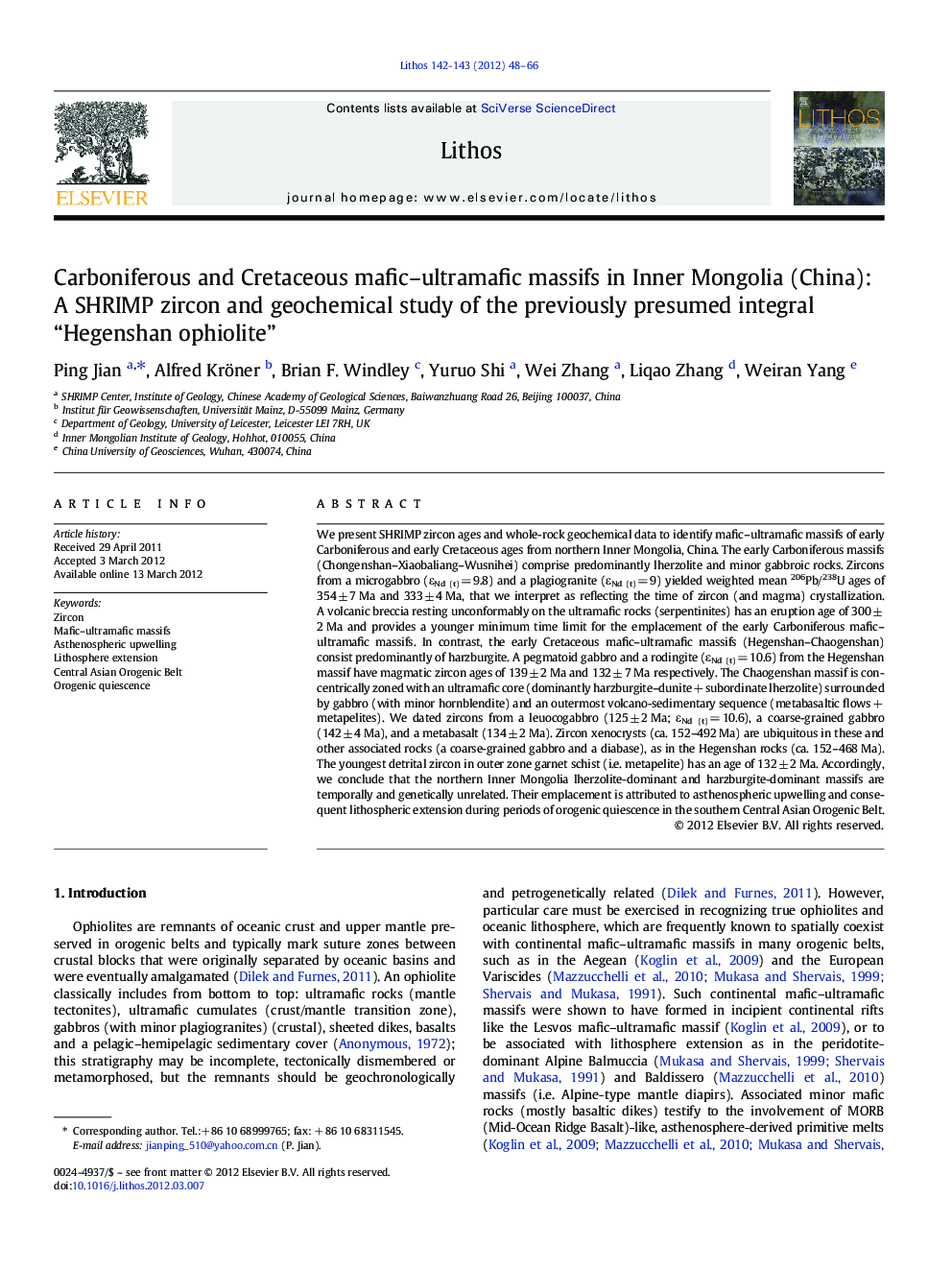| کد مقاله | کد نشریه | سال انتشار | مقاله انگلیسی | نسخه تمام متن |
|---|---|---|---|---|
| 4716593 | 1638708 | 2012 | 19 صفحه PDF | دانلود رایگان |

We present SHRIMP zircon ages and whole-rock geochemical data to identify mafic–ultramafic massifs of early Carboniferous and early Cretaceous ages from northern Inner Mongolia, China. The early Carboniferous massifs (Chongenshan–Xiaobaliang–Wusnihei) comprise predominantly lherzolite and minor gabbroic rocks. Zircons from a microgabbro (εNd (t) = 9.8) and a plagiogranite (εNd (t) = 9) yielded weighted mean 206Pb/238U ages of 354 ± 7 Ma and 333 ± 4 Ma, that we interpret as reflecting the time of zircon (and magma) crystallization. A volcanic breccia resting unconformably on the ultramafic rocks (serpentinites) has an eruption age of 300 ± 2 Ma and provides a younger minimum time limit for the emplacement of the early Carboniferous mafic–ultramafic massifs. In contrast, the early Cretaceous mafic–ultramafic massifs (Hegenshan–Chaogenshan) consist predominantly of harzburgite. A pegmatoid gabbro and a rodingite (εNd (t) = 10.6) from the Hegenshan massif have magmatic zircon ages of 139 ± 2 Ma and 132 ± 7 Ma respectively. The Chaogenshan massif is concentrically zoned with an ultramafic core (dominantly harzburgite–dunite + subordinate lherzolite) surrounded by gabbro (with minor hornblendite) and an outermost volcano-sedimentary sequence (metabasaltic flows + metapelites). We dated zircons from a leuocogabbro (125 ± 2 Ma; εNd (t) = 10.6), a coarse-grained gabbro (142 ± 4 Ma), and a metabasalt (134 ± 2 Ma). Zircon xenocrysts (ca. 152–492 Ma) are ubiquitous in these and other associated rocks (a coarse-grained gabbro and a diabase), as in the Hegenshan rocks (ca. 152–468 Ma). The youngest detrital zircon in outer zone garnet schist (i.e. metapelite) has an age of 132 ± 2 Ma. Accordingly, we conclude that the northern Inner Mongolia lherzolite-dominant and harzburgite-dominant massifs are temporally and genetically unrelated. Their emplacement is attributed to asthenospheric upwelling and consequent lithospheric extension during periods of orogenic quiescence in the southern Central Asian Orogenic Belt.
► Zircon dating invalidates a presumed “ophiolite” in the Central Asian Orogenic Belt.
► This “ophiolite” comprises mafic–ultramafic massifs of significantly different age.
► Lithospheric extension during orogenic quiescence may explain their emplacement.
► The paper discusses the diverse origins of zircon xenocrysts in mantle-derived rocks.
Journal: Lithos - Volumes 142–143, June 2012, Pages 48–66